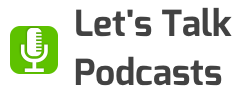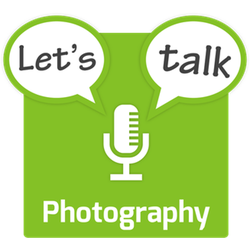Panel
- Bart Busschots (host) – @bbusschots – Flickr
This month’s show is a bit of an experiment — it’s a solo show, but unlike previous solo shows. Rather than focus on a single topic, Bart visits three mini-topics instead. First, a discussion about selfies and social media inspired by an article by Wes Siler entitled ‘Selfies Don’t Kill People’, second, a discussion on minimalistic editing inspired by episode 247 of the Shuttertime Podcast, and finally, a discussion on aspect ratios inspired by episode 13 of the PhotoActive podcast.
While this podcast is free for you to enjoy, it’s not free for Bart to create. Please consider supporting the show by becoming a patron on Patreon.
Reminder – you can submit questions for future Q & A shows at http://lets-talk.ie/photoq
Show Notes:
Topic 1 — Selfies Don’t Kill People (or Society)
Inspired by: Selfies Don’t Kill People — by Wes Siler
No one has ever been killed by a selfie. A lot of people have been killed by stupid behavior. No beautiful destination has ever been ruined by an Instagram post. A lot of beautiful places have been ruined by irresponsible assholes. When it comes to social media’s impact on the outdoors, all of us are getting mad about the wrong thing. And that anger is one of the reasons why we have a problem.
…
There’s not been any sort of increase in the frequency of accidental deaths since the advent of Instagram or Snapchat; people have always managed to find stupid ways to die. Smartphones could stop working tomorrow, and a teenage boy will still find a way to put his life at risk in order to impress a girl, even if he can’t snap a photo in the process.
…
[I]f we can attribute any statistics to the rise of social media, it could be increasing visitation to our national parks … Did all those Glacier Point selfies inspire a few new people to go camping? Undoubtedly.
…
That, of course, leads us to another problem often attributed to social media: You’re blowing up my spot, bro. Not only do photos and videos on social media help inspire new people to recreate outdoors, but they also allow users to easily share the exact locations where those photos and videos were taken.
…
I think that’s a good thing. More people becoming passionate about the outdoors equals more people who will prioritize conservation, climate change, public lands, and outdoor recreation when they vote. … [W]e need to make the outdoors easier to enjoy, not harder. Showing people where to find the cool stuff is the surest way to make sure they’ll have a good time.
…
Social media represents change. New people from more diverse backgrounds can now easily reach massive audiences. Change can be scary but it can also be powerful. … Change also happens whether you like it or not. So you might as well try and find a way to benefit from it.Every time I see a news story about national parks and other public lands being “loved to death,” and blaming social media for a boom in visitation, I can’t help but see a missed opportunity. More visitors should equal more dollars for the places that we love …
Every time I see a news story blaming a selfie for a death, I also see a missed opportunity. If social media was powerful enough to draw a person to that place, and inspire them to take a photo, then surely it can also be powerful enough to reach that person with a powerful message about responsible recreation.
If we, as a community of outdoors-loving people are worried about social media bringing people who aren’t indoctrinated into our belief system to the places we love, then damaging them, why can’t we use social media to indoctrinate those people? We’re tacitly acknowledging the effectiveness of the platform, without seeing it as a tool we can effectively use. And that’s just dumb.
… [G]etting angry at social media is only ever going to be pointless and harmful. This is an opportunity, not a problem.
- Tech has not changed us as a species — we always took risks, now we take risks with a camera in our hands!
- Every time someone dies taking a selfie it makes the news — that leads to a massively distorting selection effect. The way people go on and on about it, you’d think there were thousands of people dying a day, but there aren’t! In the six years from 2011 to 2017 there were just 259 selfie-deaths world wide!
- The existence of portable cameras that make selfies easier has not made us more shallow, we’ve always had these same urges — how many people were forced to sit through family slide shows of their aunt and uncle blocking views of the pyramids, the Eiffel Tower, Big Ben, and more? Selfie cameras and selfie stick were invented to meet a user desire, they absolutely did not create that desire! (The same is true of social media)
- Social media making the outdoors more popular is the opposite of a bad thing, it’s possibly our last chance to save this planet from becoming utterly human-hostile!
Topic 2 — Minimalistic Edits
Inspired by: Shuttertime Episode 247 — Minimalistic Editing
- Finesse the exposure:
- Black point
- White point
- curves tweak
- Finesse the colour:
- White-balance
- Saturation/Vibrance
- Finesse the crop
Topic 3 — Aspect Ratios
Inspired by: PhotoActive Episode 13 — the Importance of Aspect Ratios
- Aspect ratio really affects the feel of a composition, altering them is a really important creative tool
- Non-standard aspect ratios feel weird and uncomfortable
- My chosen approach:
- Don’t let the shape of a camera sensor confine me to a given aspect ratio. The shape of the sensor was an engineering decision, not a prison I am confined to!
- Crop to aspect ratios that improve a shot’s composition as part of my normal editing workflow.
- To avoid shots feeling weird and uncomfortable, try stick to the commonly used ratios (1:1, 4:5, 4:3, 2:3 & 16:9)

